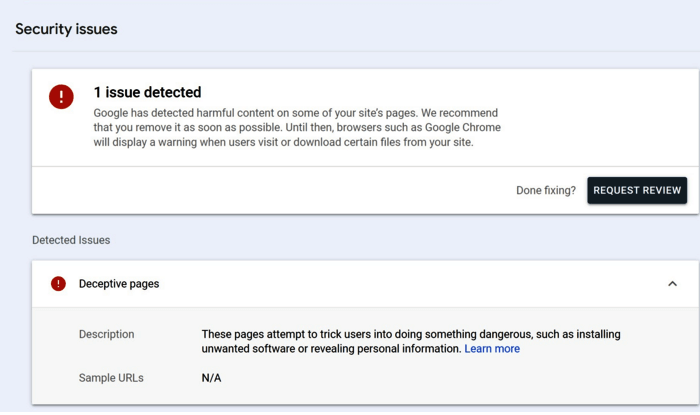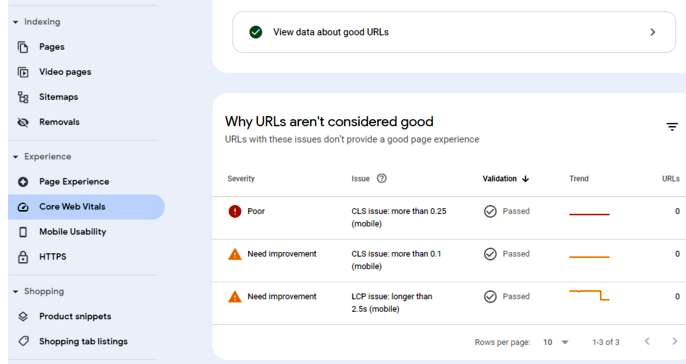
Anyone would find it frustrating to put a lot of effort into their website and receive little visitors. You pick potentially sound themes, work with SEOs and content writers, produce elegant designs, and produce high-caliber content. You should, logically, anticipate clicks and revenues, yet all you receive is nothing.
We'll explain the causes of the site traffic plateau or decline today. Of course, you should also demonstrate how to repair this and increase your popularity by getting visitors and clicks.
One of the most common yet catastrophic errors is this one. Even if your material is extremely helpful and pertinent, if it doesn't contain any relevant keywords, it is useless in the world of SEO.
In the absence of keywords, search engines might be unable to comprehend the subject matter of your material and may not rank it for the targeted query. The outcome is that a page will be vacant and unvisited.
The following are the main Points
Do keyword research right away if you haven't already. The intricate process of keyword research takes time. But, there are tools that can expedite the procedure and assist you in coming up with keyword and content suggestions. Google Search Console, for instance, allows you to view the terms for which you now rank.
You can utilise Rank Tracker to look for potential new keyword opportunities. You can choose from among the tool's 20+ keyword research techniques, or you can use them all.
It's time to develop (or update) your keyword map if you've already completed your keyword research or if you've done it before. You can use this to find the best pages for the keywords you're aiming for. You can continue to perform this task using Rank Tracker.
Once you've assigned each keyword to a specific landing page, use WebSite Auditor to determine how effectively optimised each of your pages are for each keyword. This can be done in the Content Editor module of the Page Audit page.
All of the keywords you've mapped may be present in your content, and it may be correctly optimised. The chosen keywords may still be too competitive for your site to rank well for them, like in the case where your SERP rivals are well-known brands with a lot of backlinks and a high Domain Rank (or DR). If your website isn't in that elite group, it's unlikely that traffic from challenging keywords will come from them.
Consult the SERP Analysis feature in Rank Tracker to see if the keywords you've selected are appropriate for the size of your site. Pay close attention to the keyword difficulty and fundamental traits of your SERP rivals.
A source of hints for optimisation strategy is SERP Analysis. Examine typical SERP metrics and contrast them with those on your page. You actually have a good opportunity to upscale the page and appear in the desired SERP if the difference is not too great.
Put aside those keywords and think about less challenging ones if you find that some keywords are too difficult and you don't feel like you have the resources to catch up with competition. Attempt those challenging keywords once your website gains more authority.
It's critical to understand the types of content that particular keywords cause if you want to rank for those keywords. In other words, you must comprehend the purpose of the keyword. No matter how wonderful the product page is, it is unlikely to rank for a how-to inquiry.
Consult Rank Tracker to see what kinds of content are featured on your target SERP. To find out which pages are already listed in your SERP and to review their content, use the SERP Analysis module.
Checking the Google SERP Features column under Target Keywords > Rank Tracking is an additional helpful alternative. Here, you can observe which features take up the majority of the SERP real estate and get suggestions for the kind of material to write to smuggle your website into one or more features.
Your material must be valuable and helpful if you want people to read it and share it. You must convey a fresh story in an approachable manner. If the material is mediocre, it's unlikely to get attention or traffic.
Make sure your content addresses users' problems if you want to attract traffic. Investigate your audience's concerns and areas of interest. Keep an eye on forum discussions and events related to your industry, read reviews, and pay attention to the People also ask section.
People enjoy numbers and visually represented statistics, so use simple language, cover all the relevant aspects of the issue, and include plenty of numbers and infographics in your material.
Remember to update your material frequently; even themes that seem timeless can be affected by recent news and developments in the industry.
To rank and draw traffic, your site needs to be appropriately optimised for search. As a result, if your site has several technical problems, your chances of ranking are poor.
The easiest way to bulk-check your pages and find any SEO problems is to use WebSite Auditor to do a technical SEO audit. Your website will be analysed by the programme, and the findings will be displayed in the Site Structure > Site Audit module.
All of the issues with indexing, redirects, Core Web Vitals, mobile optimisation, on-page SEO, localization, etc. will be identified by WebSite Auditor, and it will also provide you advice on how to repair them.
A single page, a collection of pages, or an entire website's rankings on Google may be affected by penalties (both algorithmic and human). In the worst case, your website can be removed from the index. It goes without saying that in this situation, there won't be any traffic growth.
Black-hat SEO tactics including keyword stuffing, page cloaking, misleading redirection, and link juice manipulation could result in a manual penalty from Google. In addition to human penalties, technical problems with your site's overall architecture, such as duplicate pages, thin content, redirect issues, etc., may result in algorithmic penalties from Google.
Visit Google Search Console and look at the Manual actions report in the Security & Manual Actions section to quickly identify manual penalties. If you are the "fortunate one" to receive a penalty, you will see a notice similar to this:

Analyze the impacted page, determine what led to the sanction, make all necessary corrections, and submit the page for review.
Algorithmic penalties present a little bit of a challenge because the GSC does not clearly enumerate them. You must therefore keep watch of Google changes (the majority of algorithmic penalties occur during the rollout of updates) and keep an eye on your own SEO activities to identify any ineffective actions that may have lowered your ranking.
The rank progress graph in Rank Tracker has all Google updates noted for your convenience so you can quickly determine whether there is a connection between changes in your ranking and Google updates.
Also, you can add your own actions to the graph to complete it. Imagine that you've updated your website's design or introduced a localised version. Add Event can be chosen by right-clicking the graph.
This will make it easier for you to keep track of your activity and determine what modification, if any, led to algorithmic penalties.
Fix the issue on the impacted pages as soon as the issue is identified, then use Search Console to request that Google reindex your website.
High bounce rates and little traffic are direct results of poor UX.
When customers arrive on your page and are instantly bombarded with intrusive pop-ups and advertising, their customer journey is probably over before it ever begins. On both desktop and mobile, poor navigation and long loading times have a negative impact on interaction and raise bounce rates.
Verify the performance of your page in Google Search Console (Experience). If any URLs are problematic, look at them further:

What distinguishes your snippets in SERPs are meta components like title, description, and structured data. Users evaluate them to determine whether or not a page is worthy of their clicks. It stands to reason that a bad sample won't receive any clicks.
Review each of your titles and descriptions thoroughly. Make them appealing and catchy to increase the likelihood that users will click. Avoid using click-baiting; names and descriptions should sum up the page's content and value.
Follow Google's guidelines for title and description length and move keywords closer to the start of your content (60 characters for titles and 160 for descriptions). Keep in mind that even though these suggestions are not required and there is truly no physical limit, Google may choose not to display any portion of your title if it exceeds the snippet viewport limit. Also, Google has a propensity to change titles on its own if it "thinks" the current one doesn't accurately describe the content of the page.
Gaining sufficient traffic without advertising is challenging. especially if your rivals spend money on sponsored advertising and take the clicks that could have been yours.
The problem is that sponsored promotion is having a hard time right now. Google and Bing ad revenue statistics show a steady decline, and the outlook for the economy as a whole is bleak.
The bid cost has decreased as a result of the revenue loss. For instance, when I looked at our own ad campaigns, I noticed that the bid prices were down by as much as 50% from the same time last year. Worldwide marketing organisations report the same circumstance.
What should we remember? Examine your marketing tactics. It is very conceivable that the bids that were previously out of your price range are now within your reach. to think about fresh advertising possibilities.
If a website is ugly, 35% of visitors leave. If your website's design hasn't been modified in a while, there are logically no opportunities for traffic and revenue growth.
These days, it would hardly pass muster. Hence, if you haven't altered the look of your website in a while, do it right away.
Examine the most recent design trends; eye-catching visual assistance may be more helpful than you realise. Pick colours that are pleasing to the eye while keeping in mind your brand and the tastes of your target market. Consider design aspects and choose readable fonts.
Yes, people are unlikely to scrutinise each design aspect and decide if it is good or not; rather, it is the whole experience that matters. Make sure your website is enjoyable to browse and use.
Today, having a social media presence is essential. Social media platforms aid in creating a community around your brand, as well as credibility and user trust. Others can share and debate your content on social media. Also, you lose out on a lucrative source of visitors if you don't use social networking.
Take your time expanding and administering your community while keeping an eye on it. Participate in discussions, respond to inquiries, and publish informative and interesting content (and memes). Negative feedback should not be ignored either; it may serve as a springboard for developing content strategies or even product strategies.
In conclusion, unlocking the full potential of your website's traffic requires a holistic approach. By addressing these 11 reasons for stagnant growth, you pave the way for a more engaging, user-friendly, and search engine-optimized online presence. Embrace continuous improvement, stay attuned to your audience's needs, and adapt your strategies accordingly. Remember, the journey to increased site traffic is an ongoing process, and with persistence and strategic adjustments, you can steer your website towards sustained growth and success.
Comments